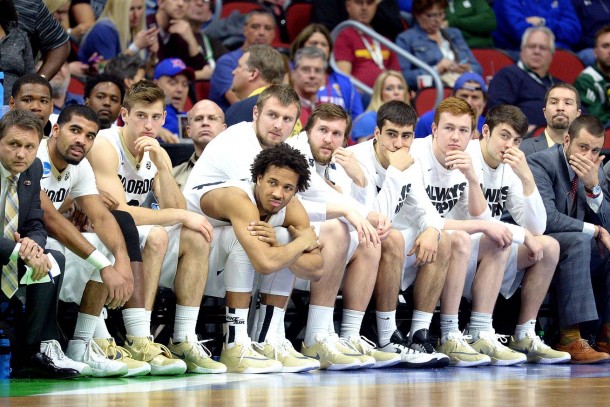No conference received more love from the NCAA tournament’s Selection Committee than the Pac-12.
Seven teams were all placed in the higher end of the bracket, meaning that all seven teams were a higher seed in the round of 64. Only the Big 12 joined the Pac in that regard.
The lowest seed in both conferences was an 8, and in an 8-9 game, chances are you’ll come upon the kinds of games and teams that are decent… and nothing more. An 8-9 game often features the kinds of NCAA tournament teams that very quietly made their way into the tournament. They collected enough wins to be removed from the edge of the bubble cut line, but they didn’t do anything loudly enough to deserve consideration for a 5 or a 6 seed. They never remotely threatened to be a 3 or a 4 seed, and let’s not even discuss a 1 or a 2.
The participants in 8-9 games don’t get publicity unless they’re spectacularly underachieving blueblood programs (North Carolina in 2013, Kentucky in 2014), or if they manage to knock out a 1 seed in the round of 32.
We’ll just have to wait for Saturday and Sunday to see if any of the 8-9 winners are worthy of a March close-up, but for now, let’s briefly note that the Pac-12 and Big 12 went 0-3 in these games. Let’s also briefly note that the Pac-12’s two teams weren’t necessarily outcoached or outclassed.
They simply couldn’t hit their free throws.
The numbers were stark in Des Moines and Raleigh, the sites of Colorado’s and USC’s 8-9 losses on Thursday.
In Des Moines, Colorado hit just 19 of 30 free throws, while Connecticut went 22 of 23 from the charity stripe. Colorado failed to build a bigger working margin, keeping UConn in the conversation. The Buffaloes continued to leave points at the line after the Huskies began their second-half surge. When UConn wobbled in the final minutes, Colorado merely got close instead of tying or taking the lead. The Huskies then locked the game down in their own right at the foul line; free throws were central, not peripheral, to that particular outcome.
Then, several hours later in Raleigh, the night concluded with USC missing two separate front ends of 1-and-1s in the final 30 seconds of regulation. Remember this about free throw stat-keeping: The sheet will say USC went 0-for-2 from the charity stripe in those final 30 seconds, but with the missed front end depriving the team and shooter of the second foul shot, the Trojans essentially went 0-for-4 in that time span. You don’t even have to make both ends of a 1-and-1 to help your team late in a tight 8-9 game against an opponent of equal caliber; you just need to make front ends in order to dramatically improve the odds for your teammates.
USC had two chances to handle front-end pressure; just one make in either of those situations would have provided valuable leverage in the face of a Providence bucket.
The well, however, ran dry.
This college basketball season is the season of the flat earth. The playing field is so level among all the competing teams. Few schools have risen well above the chaos. No team qualifies as truly great. Free throws always matter in March, but they — like other basic elements of basketball — might matter more in March of 2016, when college basketball’s season of parity involves so few pronounced gaps between Team A and Team B on any given night.
The Pac-12 didn’t necessarily put inferior teams on the court Thursday. However, its teams were inferior in one of basketball’s most fundamental crafts. Falling short in the simplest aspects of competition will be lethal in this year’s Big Dance.
Colorado and USC, ushered quickly off the Dance floor Thursday, now know that truth all too well.


